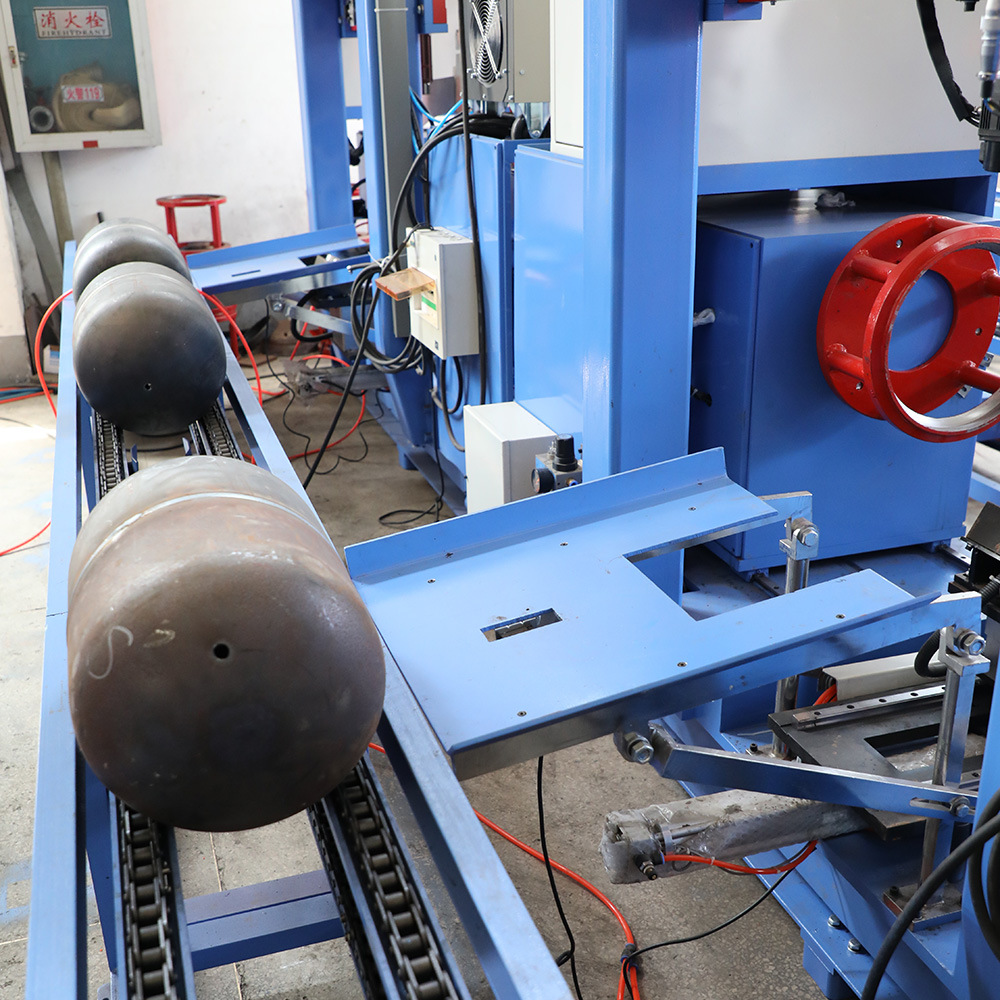Introduction: Liquefied Petroleum Gas (LPG) cylinder welding machines play a crucial role in the manufacturing process of LPG cylinders, ensuring their structural integrity and safety. Over the years, these machines have undergone significant advancements and can be classified based on various factors. This article explores the classifications and development history of LPG cylinder welding machines.
Classification of LPG Cylinder Welding Machines:
- Manual Welding Machines: Manual welding machines are operated by skilled welders who perform the welding process manually. These machines are often used for smaller-scale production and offer flexibility in handling different cylinder sizes and specifications.
- Semi-Automatic Welding Machines: Semi-automatic welding machines combine manual control with automated features. Welders guide the machine while automation assists in maintaining consistency and precision. These machines are suitable for medium-sized production lines.
- Automatic Welding Machines: Automatic welding machines are fully automated systems that require minimal human intervention. They are ideal for large-scale production, offering high efficiency, precision, and repeatability. Automated systems are equipped with sensors and controls to ensure the welding process meets specified standards.
- Robotic Welding Machines: Robotic welding machines use robotic arms equipped with welding tools to perform the welding process. These machines offer exceptional precision, speed, and can handle complex welding patterns. Robotic welding is common in high-volume production settings.
Development History:
- Early Developments: The initial development of LPG cylinder welding machines dates back to the mid-20th century. Early machines were predominantly manual, requiring skilled welders to handle the welding process.
- Introduction of Automation: In the latter half of the 20th century, the industry witnessed the introduction of semi-automatic and automatic welding machines. This shift towards automation aimed to enhance efficiency, reduce labor costs, and improve the overall quality of LPG cylinders.
- Advancements in Technology: With the advent of advanced technologies, such as computer numerical control (CNC) and robotic systems, LPG cylinder welding machines became more sophisticated. These technologies allowed for precise control, higher welding speeds, and the ability to adapt to diverse cylinder designs.
- Industry 4.0 Integration: In recent years, LPG cylinder welding machines have embraced Industry 4.0 principles, incorporating smart sensors, connectivity, and data analytics. This integration enables real-time monitoring, predictive maintenance, and optimization of the welding process for increased productivity and reduced downtime.
Conclusion: The evolution of LPG cylinder welding machines from manual to highly automated systems reflects the industry’s commitment to innovation, efficiency, and safety. As technology continues to advance, we can expect further enhancements in the capabilities of these machines, contributing to the continuous improvement of LPG cylinder manufacturing processes.

